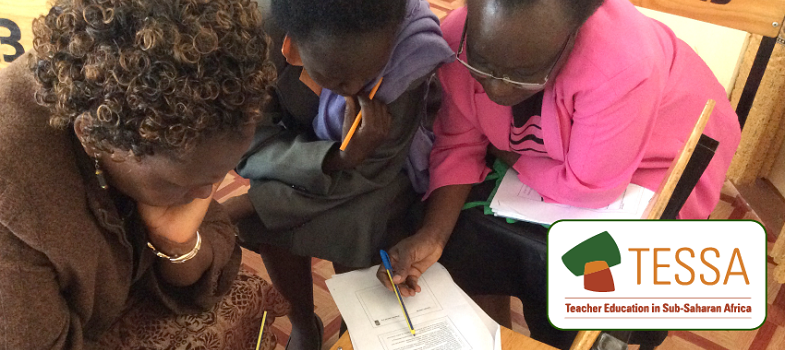1. Using pairs and groups to discuss rights and duties
All citizens, including children, have rights and duties (responsibilities), but these vary from person to person. In order for pupils to understand this, they need to explore what rights and responsibilities mean for them, share their findings with other pupils and consider the differences. To do this, they need to talk either as a whole class or in pairs or groups.
Citizenship is a difficult idea for young pupils and they may not understand it at first. It is a good idea, therefore, to relate it to something they know – such as the kinds of tasks that are carried out at home. With older pupils, you will be able to explore the topic more deeply and extend their understanding by thinking about their roles and responsibilities within the wider community.
Case Study 1: Using desk groups to discuss family rights and duties
Mrs Nqwinda is a teacher in MalbenaPrimary School in Mndantsane in the Eastern Cape of South Africa. She has a Grade 4 class of 62 pupils who sit in groups of five around each desk. It is not easy to move the children or the desks, so she used desk groups to discuss the duties pupils have to carry out at home. She chooses the group work method because she wants to make sure that all the pupils have a chance to share their ideas.
As they discuss their duties for ten minutes, she moves around the classroom making sure that no one is dominating the discussion and reminding each group to think about the three duties they are to feed back on.
The pupils find this an easy task. As the groups feed back their answers, Mrs Nqwinda writes each new duty on the chalkboard. She is interested to find that most of the girls help their mothers with tasks around the house, like cleaning and cooking and looking after smaller children. Most of the boys help their fathers and uncles with fetching wood and water, and some of them work in the fields and gardens. They have an interesting talk about gender roles in the household.
Mrs Nqwinda then asks if they could say what things they were free to do in their family. The pupils find this task more difficult, so she encourages them to discuss in their groups before giving feedback. Mrs Nqwinda writes their answers on the chalkboard and explains that these things they are free to do are their ‘rights’. She checks they understand the difference between duties and rights.
See Resource 1: Rights and duties of children for the list of her pupils’ rights and duties in the home.
Activity 1: Pair work to discuss rights and duties in the family
- Discuss the word ‘duties’ with your class and make sure they understand what it means.
- Ask the pupils, in pairs, to discuss and list the duties they have to carry out at home.
- After ten minutes, ask each pair in turn to give a different duty and list these on the chalkboard (many will have the same duties). Make sure they all understand these are their duties. Ask each pupil to record their own list of duties in their book.
- Next, ask the pairs to discuss the things they are free to do in their homes (such as read books, go to worship, go to school, play inside or outside).
- List their ideas on the chalkboard and explore their understanding about how these are their ‘rights’.
- Ask them to list and draw the things they like doing most – duties or rights.
Did you find working in pairs easy to manage? If so, why? If not, why?
How would you change this activity to improve it next time?
Did the pupils’ knowledge and ideas surprise you?
Section 1 : Exploring good citizenship



